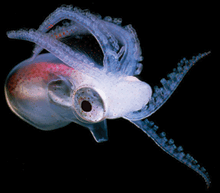 Okay, this is pretty cool. I will probably discover that it’s just some artifact of the mapping, but digging into the transformant data some more reveals what appears to be a high number of mutations within recombined segments (alleles that have neither donor nor recipient identity)...
Okay, this is pretty cool. I will probably discover that it’s just some artifact of the mapping, but digging into the transformant data some more reveals what appears to be a high number of mutations within recombined segments (alleles that have neither donor nor recipient identity)...For this analysis, I used much more stringent criteria for calling SNPs, so that low quality SNP calls would not contaminate the result. This is particularly important here, since we might expect to get lower quality SNP calls in the recombinant segments, due to the relatively high divergence between the donor and recipient genomes and the limitations of current mapping algorithms.
For TfA, there were 802 unambiguous donor alleles and 19 high-quality novel alleles, while for TfB, there were 902 unambiguous donor alleles and 21 high-quality novel alleles.
The two plots below indicate the presence of unambiguous donor alleles in blue bars going to 1 (which defined the recombinant segments), and the presence of unambiguous mutant alleles in red bars going to -1. (Click to enlarge)


That looks pretty striking! Mutations are clearly clustered into the recombined segments!
A few of the "novel alleles" in the two genomes are shared. 4 of 6 are in the first overlapping donor segment, and the other two are outside the donor segments. It is still early to be too confident in this result, but still! It is very suggestive.
I’ve never really taken the supposed causal connection between recombination and mutation too seriously, since the evidence mostly seems correlative to me, but if this result holds up, I think it will be a uniquely clear-cut example of mutations induced by recombination.
Before being confident in the result, I need to map the data back to the donor genome, and cross-check the result. If that works, some simple PCR and traditional sequencing should readily confirm or refute this deep sequencing result.

Hmm. That could contribute to the correlation between recombination rate and diversity seen in some species. And divergence and recombination rate might not correlate well if there is a lot of evolution of hot and cold spots between species.
ReplyDeleteGotta catch up on your posts, matey!